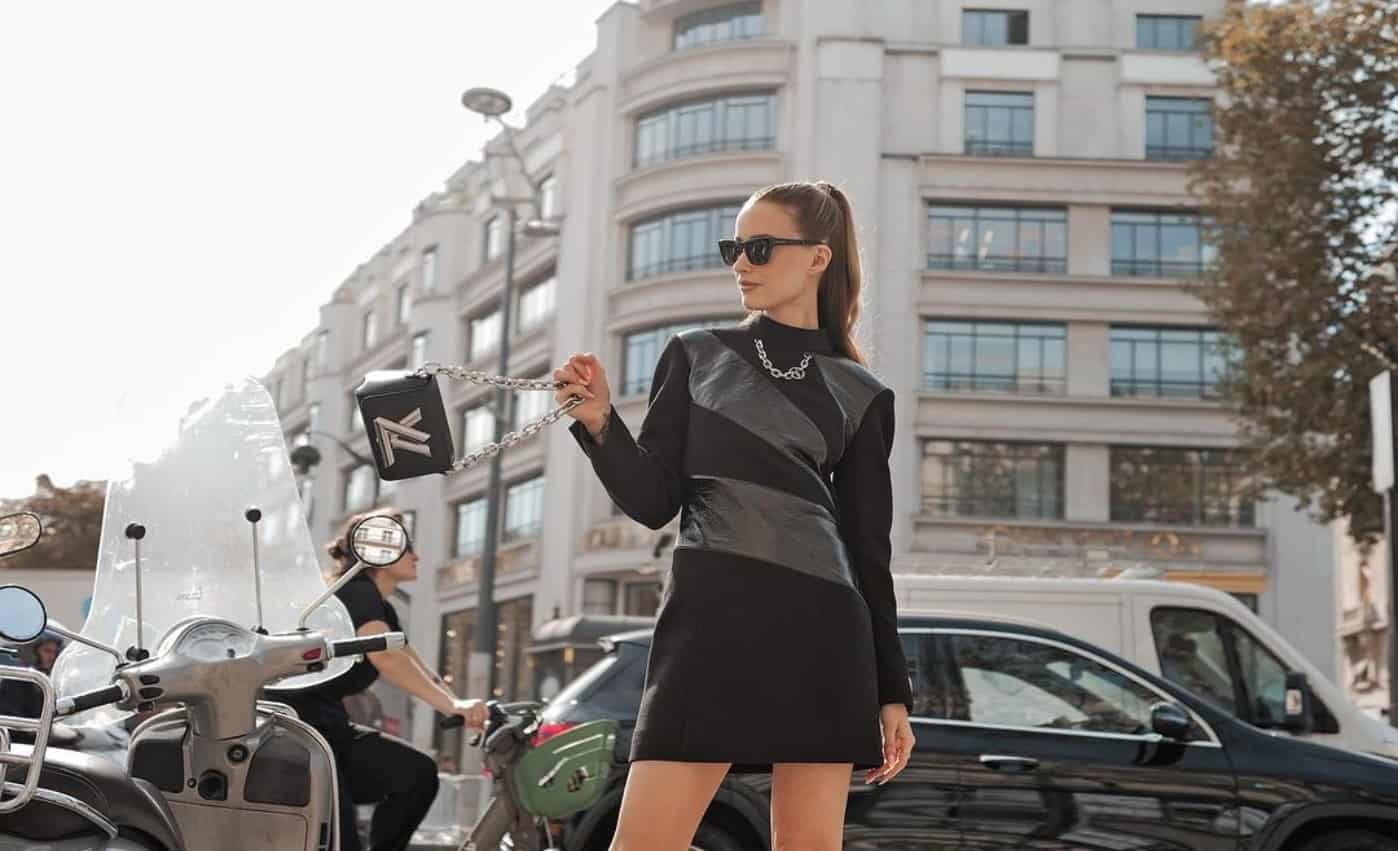Louis Vuitton hit the digisphere hard earlier this month, when US basketball star PJ Tucker shared on Instagram his personal order form for Pharrell Williams’s $1 million (£805,000) Louis Vuitton Speedy bag. The Millionaire Speedy has also been seen being carried by Pharrell himself and by rapper 21 Savage, and has caused an avalanche of discourse on the apps about the invitation-only, ultra-extravagance – extraordinary in a cost-of-living crisis. Louis Vuitton is certainly grabbing for the attention economy.
But what about the actual economy? It has been surprisingly busy in luxury, with a recent report by US management consulting firm Bain & Company announcing the global luxury goods market is expected to reach €1.5 trillion (£1.3 trillion) in 2023, an increase of eight to 10% on 2022 and a new record for the sector. While Q3 numbers showed a slowdown in growth, the overall picture is unexpectedly buoyant, with the market expected to continue in this direction, with an average growth of five to seven per cent per year until 2030.
A deeper dive into the headline shows “growth amid macroeconomic and geopolitical turbulence” with Asia setting the pace and Europe also posting robust gains. However, with the turbulence set to continue into 2024, Claudia D’Arpizio, the report’s lead author and leader of Bain’s global luxury goods and fashion practice, was keen to caution brands. D’Arpizio said: “This is a defining moment for brands, and the winners will separate themselves through resilience, relevance, and renewal — the basics of the new value-centred luxury equation.” She went on to add: “The luxury market is generating positive growth for 65-70% of brands in 2023, compared to 95% in 2022. To stay in the game, it will be crucial for brands to take bold decisions on behalf of their customers.”
Luxury fashion brands winning in 2023
Growth is the snapshot, but what’s the wider picture? Which brands have mastered “resilience, relevance and renewal”, and harnessed a combination of traditional appeal and strategic adaptation to contemporary trends. And which are the have nots?
Looking at The Lyst Index, the luxury brands that have consistently dominated in 2023 are Loewe, Miu Miu and Prada in terms of commercial sales, social coverage and covetability.
Loewe, owned by luxury conglomerate LVMH, has cornered the market with a quirky aesthetic as well as a steady eye on the quiet luxury element of its brand (more on this later), all while constantly innovating. As a result, the brand elegantly balances the fun and the versatile with investment appeal. Savvy influencer seeding, with ambassadors from Kylie Jenner in a tank top to YouTube-sensation-turned-fashion-A-lister Emma Chamberlain (who also works with Miu Miu), as well as collecting the stars of TV hits such as The White Lotus, Succession and Heartstopper, means Loewe has agency in water-cooler culture – and that’s not even including dressing Rihanna for her seminal Super Bowl performance and creating outfits for Beyonce’s Renaissance tour. JW Anderson’s Loewe is all about the experience as well, as shown by its collaboration with Studio Ghibli’s Howl’s Moving Castle, concluding in an immersive experience at Harrods.
2023 has also seen a well-documented focus on “quiet luxury”, which is more than the Succession “ludicrously capacious bag” joke about stealth wealth. The cost-of-living crisis has mandated quality over quantity conversations, along with a sustainability focus. One of the standout winners of this debate is Hermès. According to a Reuters report: “Third quarter sales at Birkin bag maker Hermès rose briskly, up 15.6% year-on-year, with the pace of growth slowing only slightly in a show of resilience of its wealthy clientele in spite of economic headwinds.”
Birkintok is a beast with its own lifeforce: #birkin has 1.6 billion views, and the brand is synonymous with hard-to-find luxury and durability, as well as being an instant status definer. The Birkin flux is a good example of how the modern luxury economy has been fuelled, in part, by internet youth culture, where resale apps are predominate, as are “buy now, pay later” mechanisms. Fuelled by internet chatter, by influencers, luxury resale experts and TikTok explainers, Birkin’s relevance roots run deep. Hermès and Loewe have booked their places in pop culture, and this is apt when you look at Bain & Company’s 2022 research demonstrating members of Gen Z are making their first luxury purchase earlier than Millennials did, at around age 15. Generation Alpha are expected to behave in the same way.
You may also like
Luxury brands have also found success in streetwear link-ups such as the Miu Miu X New Balance collaboration. The aforementioned Louis Vuitton has created showstopping moments, such as the Millionaire Speedy bag and the presentation of Pharrell Williams’ debut collection for Louis Vuitton in Paris. The show saw the label closing the Pont Neuf. In terms of social currency, the numbers are seismic: #louisvuitton has more than 14 billion TikTok views and #pharrellwilliams has more than one billion.
Back to the quiet, stealth wealth brands experiencing more than stealthy rises, including Brunello Cucinelli and Zegna, which confirmed stellar financial results in 2023, with at least 20% growth in Q3. The Brunello Cucinelli investor report acknowledged supporting the sales were “the affirmation of quiet and precious luxury as the new direction of taste” and “the great recognition of the value of exclusiveness and rarity”.
If Hermès and Loewe are signs of resilience and relevance, respectively, and Louis Vuitton renewal, it is interesting to compare the brands that have lost their way in 2023. In Q3, Gucci, the former growth star of luxury goods group Kering, reported a 14% drop in revenue, according to Forbes. Sales in Kering’s Other Houses division, which includes Balenciaga, fell by 19%. In an earnings call, as reported to Forbes: “Kering deputy CEO Jean-Marc Duplaix reflected on Gucci, saying the changes in expression and attitude reflected in the introduction in September of newly installed creative director Sabato De Sarno’s first collection will ‘reestablish Gucci’s edge in sparkle’.” However, De Sarno’s reviews were less than sparkly. Perhaps Gucci and Balenciaga are struggling because they sit at the awkward juncture of fashion and luxury.
Setting trends is one thing, but with the aforementioned backdrop of a cost-of-living crisis and global instability, brands that have established consistent quality are winning. Dupe culture means obvious trends are immediately replicated, at a fraction of the price, and then instantly disseminated through internet conversation. If you don’t have the storytelling resilience piece in place then you are vulnerable to the fickle fashion headwinds, as well as cost-of-living pressures. Balenciaga has been hit with scandals, which have been widely discussed and explored on platforms such as TikTok, as well as being a victim of its own aggressive trendsetting agenda.
In Q1, The Lyst Index hinted at the destabilised luxury landscape of 2023, reporting: “As the trend cycle races and rages between extravagant costume dress-up and more wearable dressing, we’re seeing the fashion shopper oscillate wildly between loud vs quiet luxury, and big versus smaller brands, influenced by ongoing movements plus viral brand moments.” Now we are reaching the end of 2023, it seems the bedrock of success in 2024 will be continued consistency in brand storytelling accompanied by showstoppers. Come on, TikTok is waiting…
By Emilie McMeekan, CORQ features director. Picture credit: Louis Vuitton









